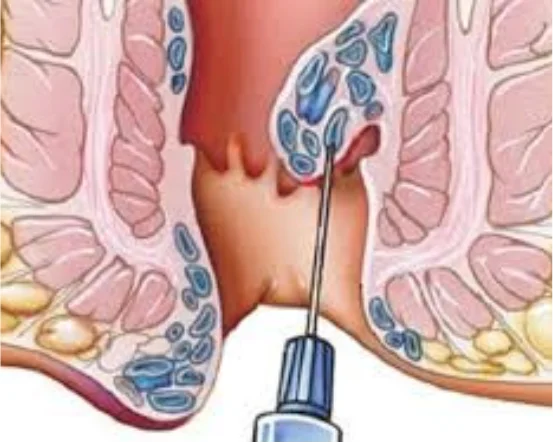Hydrocele surgery is a common, safe, and effective procedure used to treat a hydrocele — a condition where fluid accumulates in the scrotum around the testicle. While hydroceles are typically painless and often seen in newborns, they can also develop in adults due to injury, inflammation, or underlying medical conditions. When the swelling becomes uncomfortable or persists, surgery may be recommended.
Hydroceles are most commonly observed in newborns and infants, especially boys, as part of a normal developmental process. In these cases, a hydrocele may form if the processes vaginalis a thin pouch of tissue that accompanies the testicles during their descent into the scrotum fails to close completely after birth. This allows abdominal fluid to flow into the scrotum, creating a hydrocele. Fortunately, most infant hydroceles resolve on their own within the first year of life without the need for medical intervention.
What Is a Hydrocele?
A hydrocele is a fluid-filled sac that forms around a testicle, leading to swelling in the scrotum. It usually occurs in:
- Newborns :- Often due to the failure of the processes vaginalis (a natural opening between the abdomen and scrotum) to close.
- Adults :- Usually caused by inflammation, infection, injury, or sometimes due to surgery or tumors in the scrotal region.
Hydroceles are generally not dangerous but can cause discomfort, embarrassment, or complications if left untreated for too long.
When Is Hydrocele Surgery Needed?
In infants, hydroceles often resolve on their own within a year. But in older children or adults, medical intervention is needed if:
- The swelling persists or increases in size
- There is pain or discomfort
- There is an associated infection or hernia
- The hydrocele affects mobility, daily life, or appearance
Surgery is typically recommended when other non-surgical treatments (like aspiration) are ineffective or if the hydrocele recurs frequently.
What Is Hydrocele Surgery?
Hydrocele surgery, also known as hydrocelectomy, is a minor surgical procedure that removes or repairs the hydrocele sac. The goal is to stop the fluid accumulation around the testicle and prevent recurrence.
There are two common types of hydrocelectomy:
- Open Hydrocelectomy :- This is the traditional and most commonly used method. A small incision is made in the scrotum or lower abdomen to drain the fluid and remove or seal the hydrocele sac.
- Laparoscopic Hydrocelectomy :- In this minimally invasive method, small incisions are made, and a laparoscope (a thin tube with a camera) is inserted to guide the surgeon. This is typically used when the hydrocele is associated with a hernia or other abdominal issues.
The Hydrocele Surgery Procedure: Step-by-Step
Here’s what you can expect during the hydrocele surgery process:
- Preoperative Preparation :- A physical examination and ultrasound are done to confirm the diagnosis. Routine blood tests and anesthesia assessment may be required. The patient is asked to fast for 6–8 hours before surgery.
- Anesthesia :- The procedure is usually done under local, regional, or general anesthesia, depending on the patient’s age, health condition, and preference.
- Surgical Procedure :- The surgeon makes a small incision in the scrotum. The hydrocele sac is exposed, drained, and then either removed or stitched to prevent fluid reaccumulation. The incision is closed with dissolvable stitches or sutures.
- Duration :- Hydrocelectomy usually takes 30 to 60 minutes and is often performed as an outpatient (daycare) procedure.
Recovery After Hydrocele Surgery
Recovery from hydrocele surgery is relatively quick and straightforward. Here’s what patients can expect post-surgery:
- Hospital Stay :- Most patients can go home the same day. In some cases, an overnight stay may be required for observation.
- Pain & Swelling :- Mild pain and scrotal swelling are normal for a few days. Pain medications and anti-inflammatories are usually prescribed.
- Activity Restrictions :- Avoid strenuous activities, lifting heavy objects, or sexual activity for 2 to 3 weeks. Wearing supportive underwear (scrotal support) helps reduce discomfort and swelling.
- Follow-Up :- Stitches usually dissolve on their own. A follow-up visit may be scheduled within a week or two to monitor healing.
- Full Recovery Time :- Most patients return to normal activities within 7 to 10 days, with full recovery typically expected in 2 to 3 weeks.
Risks and Complications of Hydrocele Surgery
Hydrocele surgery is considered safe, but like any surgical procedure, there are some risks involved:
- Infection at the surgical site
- Bleeding or hematoma
- Scrotal swelling or bruising
- Reaction to anesthesia
- Injury to nearby structures (rare)
- Recurrence of the hydrocele in some cases
Following your doctor’s postoperative care instructions can greatly minimize these risks.
Alternative Treatments for Hydrocele
In certain cases, especially for adults who are not fit for surgery, non-surgical methods may be considered:
- Needle Aspiration
- Fluid is drained using a syringe.
- Often a temporary solution; recurrence is common.
- Sclerotherapy
- After aspiration, a sclerosing agent is injected to close the sac and prevent fluid buildup.
- Less effective than surgery and may require multiple sessions.
These methods are typically considered when surgery is not an option due to other medical conditions.
Does hydrocele affect fertility?
Hydrocele itself does not usually affect fertility. However, if caused by infection or associated with other testicular issues, it should be evaluated further.
Conclusion
Hydrocele surgery is a simple, effective, and low-risk procedure that offers long-term relief from the discomfort and swelling associated with hydroceles. Whether you’re considering surgery for yourself or a loved one, understanding the procedure, recovery, and associated costs can help you make an informed decision.
If you’re experiencing persistent scrotal swelling or discomfort, consult a urologist for evaluation. Early treatment can prevent complications and improve your quality of life.























